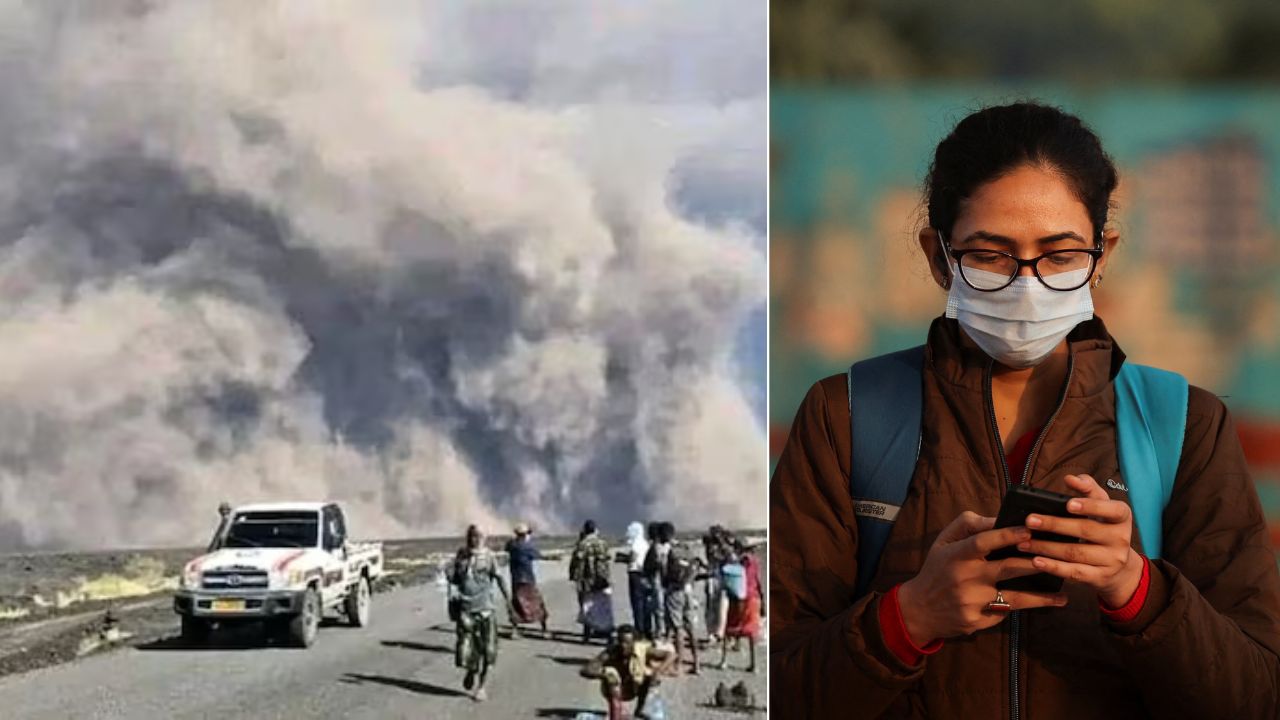 English
English

Delhi’s air quality has plunged into the ‘very poor’ category, with 37 out of 39 monitoring stations recording AQI above 300 and several crossing the 400 mark. Rohini reported the worst AQI at 416. Surrounding NCR cities including Noida, Ghaziabad and Gurugram are also in the red zone.

Kashmir Freezes at –5°C While Torrential Rains Hammer South India
New Delhi: Air quality in the national capital, Delhi, has once again reached hazardous levels. According to data recorded on the SAMEER app on Tuesday morning, 37 of Delhi's 39 monitoring stations recorded an AQI above 300, which falls in the "very poor" category. In many areas of the capital, the AQI reached near or above 400, posing a significant health risk. A blanket of smoke, dust, and haze loomed over the city, and air pollution levels continued to rise.
Rohini was the most polluted area in Delhi, with an AQI of 416. Anand Vihar also recorded an AQI of 400, which falls in the "severe" category. Mandir Marg recorded the lowest AQI of 289, which, while relatively low compared to other areas, still falls in the "poor" category.
Delhi AQI nears ‘severe’ category; Highest pollution level of season, no GRAP restrictions yet?
Alipur recorded an AQI of 360, Ashok Vihar 385, Aya Nagar 345, Bawana 389, Burari Crossing 381, Chandni Chowk 356, Mathura Road 366, Karni Singh 375, DTU 396, Dwarka Sector-8 378, ITO 378, Jahangirpuri 399, Jawaharlal Nehru Stadium 360, and Lodhi Road recorded an AQI of 322.
These figures clearly indicate that the air in almost all parts of Delhi is highly polluted, making breathing difficult.
AQI in Delhi as well as in NCR cities is at dangerous levels.
Noida recorded an AQI of 388, Ghaziabad 361, and Gurugram 311, all of which fall in the red zone. Due to increasing air pollution, people are experiencing eye irritation, fatigue, breathing difficulties, and allergies. Experts have advised the elderly, children, and those suffering from respiratory diseases to limit outdoor activities.
A dense cloud of ash from the Haile Gubbi volcano, which recently erupted in Ethiopia after thousands of years, reached northwest India on Monday. This information raised concerns about whether this ash would further worsen Delhi's already poor air quality. Scientists had expressed concern that if the ash reached surface level, pollution could increase further.
Delhi air pollution hits hazardous levels, AQI crosses 400; NCR breathing toxic air
India Meteorological Department (IMD) Director General M. Mahapatra clarified that the volcanic ash will not have any significant impact on Delhi's AQI. He stated that this ash is present in the upper atmosphere and will not reach the surface level. Therefore, the general public should not worry about any additional increase in pollution.
He also said that while this ash may cause a slight increase in minimum temperatures, it is unlikely to have a major impact on air quality. The root causes of smog and pollution are local and regional sources.
Delhi's air quality remains extremely poor, and experts believe that the situation is unlikely to improve significantly for the next few days.